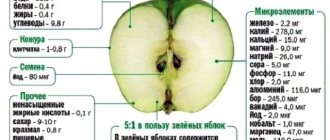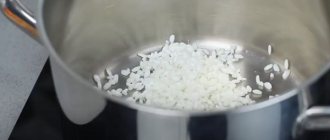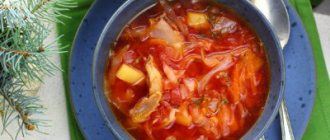Up to 6 months, the child eats exclusively mother’s milk or an adapted formula. From the age of six months, adult foods begin to be introduced into the baby’s diet, one of which is porridge. They are prepared from different cereals, and parents often have doubts about which ones their baby can eat. Usually rice and buckwheat do not raise questions. When can you give your child millet porridge?
The first children's millet porridge
The benefits of millet porridge
Millet is millet that has been shelled. It can be sold both in polished and crushed form. Millet contains a huge amount of microelements beneficial for the body and vitamins A, B and E.
Millet porridge during breastfeeding
Also, millet porridge for a child has many other benefits:
- Has a beneficial effect on the heart and liver.
- Helps remove toxins.
- It does not contain gluten, so it is suitable for children whose bodies do not accept this protein.
- Normalizes digestion and intestinal microflora.
- May improve stool. The specific effect is determined by the accompanying ingredients.
Composition and nutritional value
Millet is rich in proteins and starch, and also contains essential amino acids. 0.5-0.8 percent of the cereal composition is fiber. It also contains large amounts of fats, carbohydrates, vitamins, potassium, magnesium and phosphorus. Cereals occupy a leading position in the content of molybdenum and magnesium.
Child before feeding porridge
In terms of the amount of proteins, millet outperforms barley and rice, and ranks second among cereals in terms of the amount of fat. Their content is higher only in oatmeal.
Millet contains polyunsaturated fatty acids, which have a beneficial effect on the cardiovascular system and intelligence. There are more B vitamins in millet than in all other cereals.
Benefit
Millet has a gentle effect on the digestive tract - in this it can hardly find a competitor among cereals.
The ingredients of millet cereal provide a versatile effect on the body:
- Silicon, fluorine and phosphorus ensure the development and strength of the skeletal system.
- Vitamin B1 (thiamine) and phosphorus are essential for normal brain function. The beneficial effects of B vitamins contained in millet porridge will reduce restlessness, anxiety and irritability, and a feeling of fatigue in children.
- Plant proteins and millet amino acids contribute to the intensive development of muscle tissue.
- Millet, with the help of pectin and fiber, will help the body get rid of toxins and toxic substances.
- Increased sweating and a slight diuretic effect will help remove excess fluid from the body.
- The vitamin and mineral composition of millet, when consumed regularly, enhances reparative processes, accelerates wound healing, and the fusion of injured bones and cartilage.
- Vitamins PP, B2 (riboflavin), and the microelement zinc will ensure healthy skin, maintain its elasticity and relieve irritation, relieve dandruff, and improve the condition of nails and hair.
- Folic acid (vitamin B9) and iron are important for hematopoiesis, they help in the treatment and prevention of anemia in children. By the way, there is more folic acid in millet cereals than in wheat and corn.
- Pyridoxine (vitamin B6) and potassium are necessary for the normal functioning of the heart muscle.
- Vitamins and minerals of millet cereals help improve immunity and participate in carbohydrate and fat metabolism.
- The lipotropic effect of the ingredients of millet porridge prevents the accumulation and deposition of fat in the body. Therefore, millet porridge can be given to overweight children.
Selection of millet cereals
Allergy to buckwheat in infants up to one year old
It is advisable to buy millet in transparent packaging, because this makes it easier to see the visual defects of the cereal. Cereals sold by weight are exposed to a large number of harmful factors that destroy beneficial qualities.
The baby looks at the porridge with interest
The surface of the cereal should be matte and yellow. In high-quality cereals there is no cloudiness or inclusions of other colors. Millet is high in calories - 340 kcal per 100 grams.
Storing millet cereals
How to accustom your child to a sleep and feeding schedule
It is not recommended to store cereals at home for a long time, otherwise the fats will oxidize and become bitter. Cereals should be stored in a cool, dry place (temperature up to 18 degrees, relative humidity 60-70%). Millet best retains its consumer qualities in a container.
If these conditions are met, the shelf life of millet is 9 months, but this is ideal. In practice, the conditions of production, transportation and storage in the store may not be met.
When to introduce into complementary foods
Diapers for boys - can a newborn be worn?
When can you give millet to a child? This type of porridge should be introduced at 8-9 months. By this time, the baby should already be eating buckwheat, rice and corn cereals. At this age, it is necessary to grind the cereal very finely, until it becomes flour. Close to one year old, you can give your baby larger particles, and by 1.5 years old, whole grain cereals. The numbers describing the age at which millet can be given to a child are only approximate.
Baby eating porridge
The first portion of porridge should not be large - just one teaspoon, which is given for breakfast. This makes it easier to track the manifestations of allergies in a child and understand their cause. If a small portion is easily tolerated by a child, he can be given two teaspoons, then 4, 8, and so on until the amount is appropriate for his age.
The child may not like to eat porridge. Then you can use fruit or vegetable syrup instead of water. Already prepared porridge can be mixed with puree made, for example, from pumpkin.
Important! There is no exact answer to the question of when you can give millet to a child. The main thing is that he is already ready to receive complementary foods. You need to try, starting with a small portion.
Millet for children: is it possible or not, from what age
Increasingly, young parents are becoming anti-gluten. This newfangled topic is tormenting many today. It is believed that cereal protein is difficult for a baby’s fragile body to digest and can cause allergic reactions.
Indeed, unlike rice, millet contains gluten, but in minimal quantities. The gluten content in millet is so low that pediatricians do not consider its presence a sufficient reason to refuse the product in childhood.
Now let's move on to the second part of the question - at what age can children eat millet.
Pediatricians advise introducing the product into the baby’s diet starting from one year.
Millet is a very tasty, nutritious and dietary product that fully meets the requirements of a healthy diet for both adults and children. It is not only possible, but also necessary to introduce it into the baby’s diet, following the pediatrician’s recommendations.
Proper preparation of millet porridge
To prepare the first millet porridge, you need to take 100 grams of flour and pour 100-150 milliliters of water into the pan. Next, it is brought to a boil, and the porridge is poured into it. It takes 3-5 minutes to cook. After the process is completed, butter or fruit puree is added, which is already used in feeding the baby.
Important! Dr. Komarovsky says that until the age of 1 year, a child should not be given millet prepared from whole cow's milk. Only adapted mixtures should be used. Large amounts of porridge are not recommended for children up to one year of age.
After 12 months you can use this recipe. Take 250 ml of milk and bring to a boil. After this, half a glass of millet is poured into it. You can also add fruit puree to the porridge. If the child is 1.5 years old, you can add pumpkin, steamed raisins, pieces of fruit or berries to the prepared porridge.
You can also prepare millet milk porridge for a child in a slow cooker. The consistency of the dish is adjusted using different amounts of milk. If there is not enough of it, the porridge will be crumbly, a little more - viscous or liquid.
The slow cooker prevents the porridge from escaping and can also maintain the desired temperature for as long as required. Do not give your child food that is too cold or hot. It should be at medium temperature.
How to cook millet in a slow cooker:
- First, the cereal is washed. It must first be separated from inedible fractions.
- Millet is poured into a slow cooker, milk, salt and sugar are added.
- The “cooking” mode and the “porridge” product are selected.
The device will notify you about the preparation of the dish using a sound signal.
Recipes for millet dishes
Millet porridge for babies
- To prepare it, you need to take 150 ml of water and bring to a boil.
- Add 10 g of finely ground millet flour and cook for 3-5 minutes over low heat with constant stirring.
To the slightly cooled porridge, you can add fruits that are already familiar to the child (grated apple, banana, peach, red currant, apricot).
After a year, you need to take half a glass of millet flour per 200 ml of water and cook until tender. You can improve the taste by adding butter, berries and fruits.
Millet porridge with milk
For older children, it is prepared from whole grains:
- Well washed (until the water is clear) millet (1 cup) should be poured into a saucepan with water (400 ml).
- After boiling, remove the foam and reduce the heat.
- Cook while stirring until the water disappears.
- Boil 400 ml of milk and add it to the porridge.
- Add a little salt (if desired, you can sweeten the porridge with 2 tablespoons of sugar) and cook it while stirring until thickened over low heat.
- Add butter (25-30 g) to the porridge and remove from heat.
Instead of sugar, you can add honey to the finished porridge if you are not allergic to it.
Puree soup with millet in vegetable broth
- Take 1 tbsp. l. washed millet, add water and cook until tender (possibly in a Turkish pot) over low heat.
- Place chopped vegetables in another saucepan (2-3 medium-sized potatoes, 1 medium-sized carrot), add water and cook until tender.
- Grind the vegetables and porridge in a blender until pureed.
- Add boiled milk (200 ml) to the resulting mass, bring to a boil, remove from heat.
- Add salt to taste; if desired, you can add dill and parsley.
- Before serving, add sour cream (15-20 g).
Millet porridge with pumpkin
Preparation:
- Rinse half a glass of millet with hot water and place in a saucepan.
- Cut approximately 150-170 g of peeled pumpkin into small cubes.
- Add pumpkin to millet and add hot water.
- After boiling, remove the foam and add salt, cook until the water boils (the millet is still hard).
- Add 200 ml of hot boiled milk and simmer over low heat, covered, until the porridge is ready.
- Butter is added to taste, you can also add steamed raisins.
Complementary feeding standards
The standards for introducing complementary foods are individual for each child. The parent should check for himself how much food the child’s body digests well. A sure sign that you have eaten too much porridge is constipation and bloating.
The feeding rules are as follows:
- Eating is done at a slow pace.
- The parent needs to wait patiently until the child decides to eat the next portion. You cannot shout at him, criticize him or express your dissatisfaction in any way.
- It is forbidden to force a child to eat if he does not want to. If the baby refuses to eat millet porridge, then you need to try again no earlier than after 2 weeks. It usually takes up to 15 attempts for a child to get used to a new taste.
How often to give
After starting complementary feeding, the baby should receive it 4 times a day. But you can’t feed your baby exclusively porridge. It is best offered before breastfeeding or taking formula.
Quantity
For millet porridge, the following daily consumption standards apply:
- 8 months – no more than 150 grams per day;
- 9 months – no more than 180 grams per day;
- from 10 months to one year of age - 200 grams per day.
What can be combined with
Millet cereals are good to combine with breast milk, which the mother should feed the baby for at least one year. Also, this food goes well with berries and fruits, making the taste more attractive to the baby. For example, you can make millet porridge with pumpkin.
Timing of introduction of cereals for complementary feeding of infants
How much and what kind of porridge should I give? Here are some approximate indicators for when and what cereals to introduce to your baby:
| Age of your child | Porridge |
| From six months | Gluten-free rice and buckwheat porridge to minimize the risk of developing allergies. |
| From seven months | A combination of gluten-free porridges: rice, buckwheat, corn, millet (you can prepare two-component dishes after the baby tries all these cereals separately) (more details in the article: how to prepare rice porridge for a baby?) |
| From eight months | Gluten-free two-component mixtures. Gluten-containing wheat, semolina, oatmeal. |
| From nine months | Gluten-containing three-component. |
READ ALSO: how to cook semolina porridge for children under one year old?
In the third week after you start introducing porridge into the baby’s diet, you can add 1 g of butter to the dish, that is, a small piece on the tip of a knife, and by 8 months of age the amount of butter can be increased to 5 g. Buckwheat porridge, which has the most high nutritional value, it is considered the best option with which to start complementary feeding. It is buckwheat that has the least impact on the functioning of the gastrointestinal tract; it is easily digestible, does not weaken or strengthen.
To read: How can you increase the level of estradiol in a woman’s body: what foods contain it?
READ ALSO: buckwheat porridge for complementary feeding for infants: recipe
Children older than 8 months are fed gluten-containing cereals, since the likelihood of individual intolerance is lower. The main thing is to follow the order - first introduce oatmeal into the diet, then semolina, then wheat (more details in the article: preparing oatmeal for children).
READ ALSO: corn porridge for feeding infants
Possible problems
You need to introduce millet porridge into your baby's complementary foods gradually, carefully observing the baby's reaction. If the body does not tolerate millet porridge well, allergic reactions and digestive disorders may occur. In this case, you need to wait. Perhaps it is too early for the baby’s body to digest such complex foods.
Advice. The child may refuse porridge. In this case, there is no need to force him to eat. Otherwise, he may refuse to consume other foods other than breast milk, and at 8 months it is no longer enough.
Thus, millet porridge can be given to a child, but this is done after the introduction of the initial complementary foods. It is quite difficult to digest, but can provide the body with a large amount of useful substances.
Pros and cons for babies
Millet is useful for the rapid development of a child. It has many useful qualities:
- fluoride helps the skeletal system form;
- Toxins and antibiotic residues are removed from the body. Therefore, millet is classified as a therapeutic and preventive food;
- increases immunity;
- manganese improves metabolism;
- silicon strengthens bones;
- with regular use, gastrointestinal functions improve;
- microflora is normalized and intestinal motility is accelerated;
- allowed to be consumed by children suffering from obesity and diabetes;
- skin condition improves;
- has a beneficial effect on the cardiac and vascular systems;
- improves vision;
- normalizes liver function.
Minuses:
- contains a large amount of starch and carbohydrates;
- the dish is a hypoallergenic product, but allergic reactions may occasionally occur;
- phytin, which is part of the cereal, makes it difficult for the body to absorb nutrients;
- if abused, flatulence and bloating occur;
- If you cook from aged cereals, the finished dish will become bitter and the baby will not like it.
In infants, an allergic reaction manifests itself not only in the form of skin rashes.
The temperature may rise, breathing may become difficult, and the heart rate may become irregular. Most often, allergies in children occur to gluten, which a fragile child’s body cannot absorb. Therefore, to avoid negative reactions, it is not recommended to administer it before 8 months of age.











